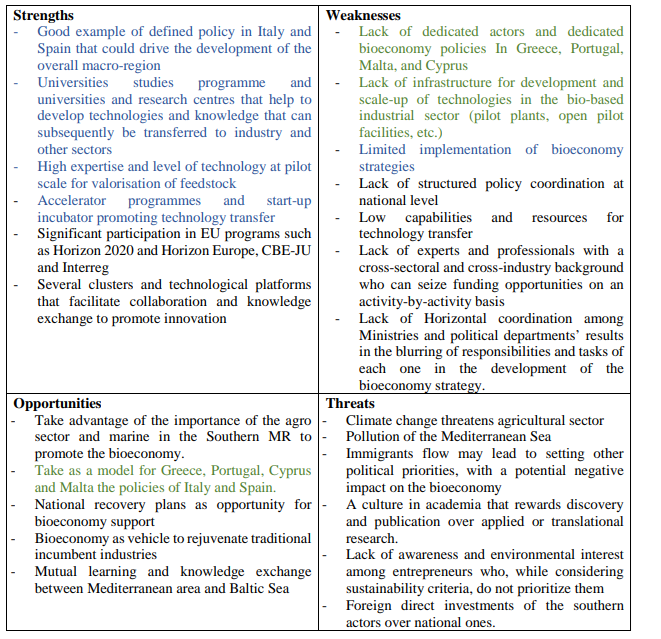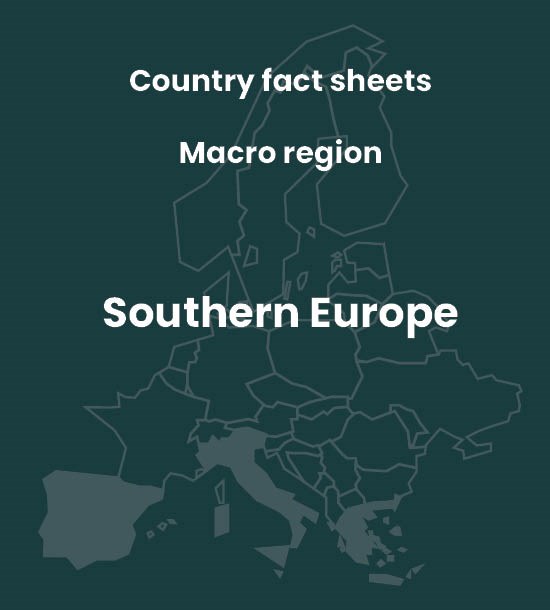The southern macro-region is composed of six countries: Spain, Portugal, Malta, Italy, Greece, and Cyprus.
The countries of the southern macro-region represent 25.12% of the total area of the EU-27. Spain is the second largest country in the EU; however, Cyprus and Malta are placed in the last positions compared to
the rest of the countries.
Regarding the number of inhabitants, the southern macro-region accounts for 28.81% of the total population of the EU-27. Italy and Spain are ranked at the top, only surpassed by Germany and France. However, Cyprus and Malta, despite its area, are placed in the last positions in terms of the number of inhabitants.
SWOT Analysis of the Southern Europe Macro Region
In the SWOT analysis below, an overview of the region’s strengths, weaknesses, opportunities and threats are provided. As you can see, the analysis shows among others that the Southern Europe Region has a very strong agrifood sector as well as many capable organizations (universities, policy makers, several clusters...), strong skills/expertise related to bioconomy and innovation.

Below is a map summarising the main strategies, collaborative structures and policy instruments in the Southern Europe macro-region (Spain, Italy, Malta, Portugal, Greece and Cyprus).
Country fact sheets to be downloaded!
If you’re curious to know more about the bioeconomy sector in the Baltic See Region, you can read the recently published report called ”Report on macro-regions – Mapping of initiatives, structures, instruments and key challenges for EU’s macro-regions”
